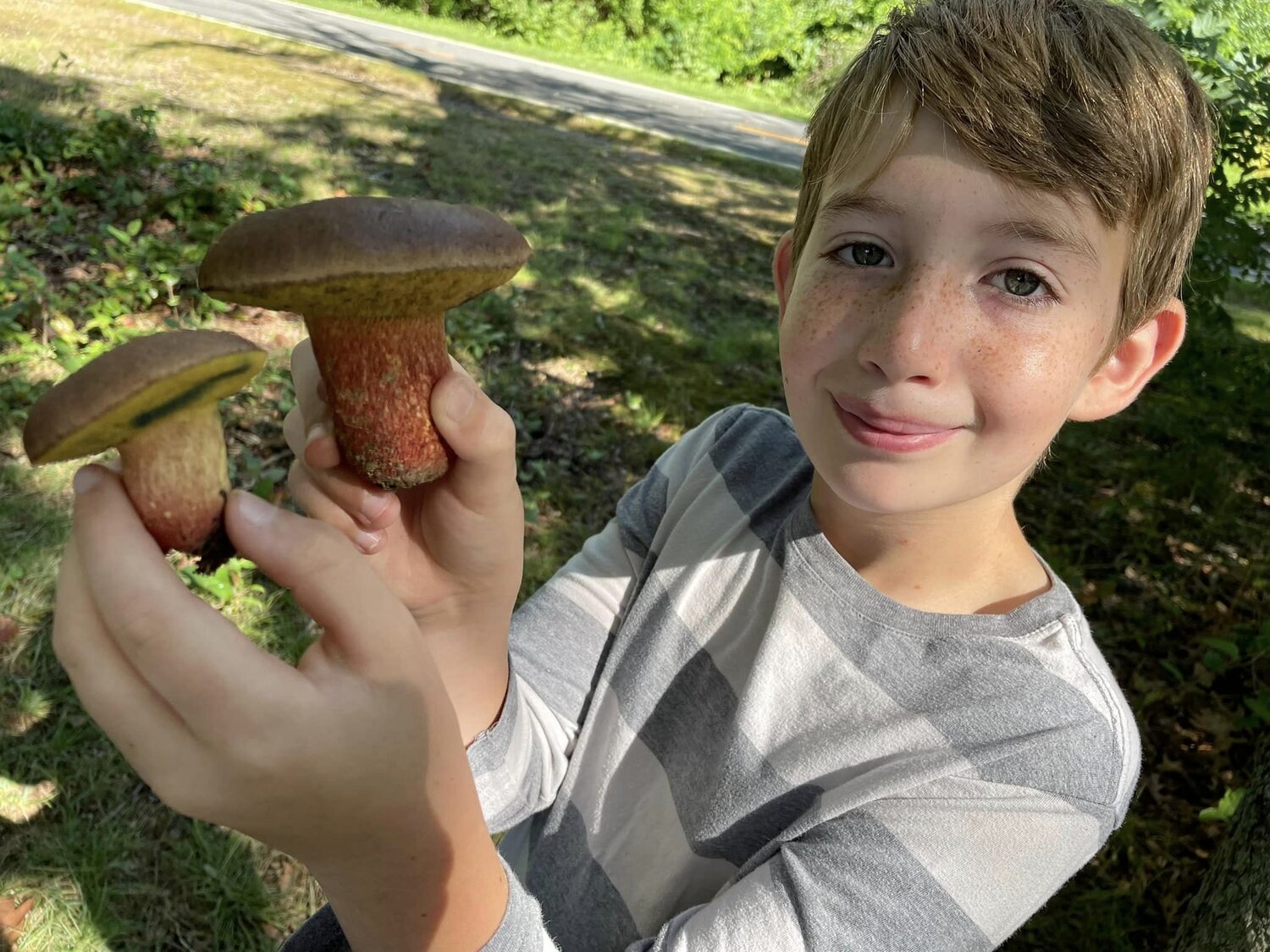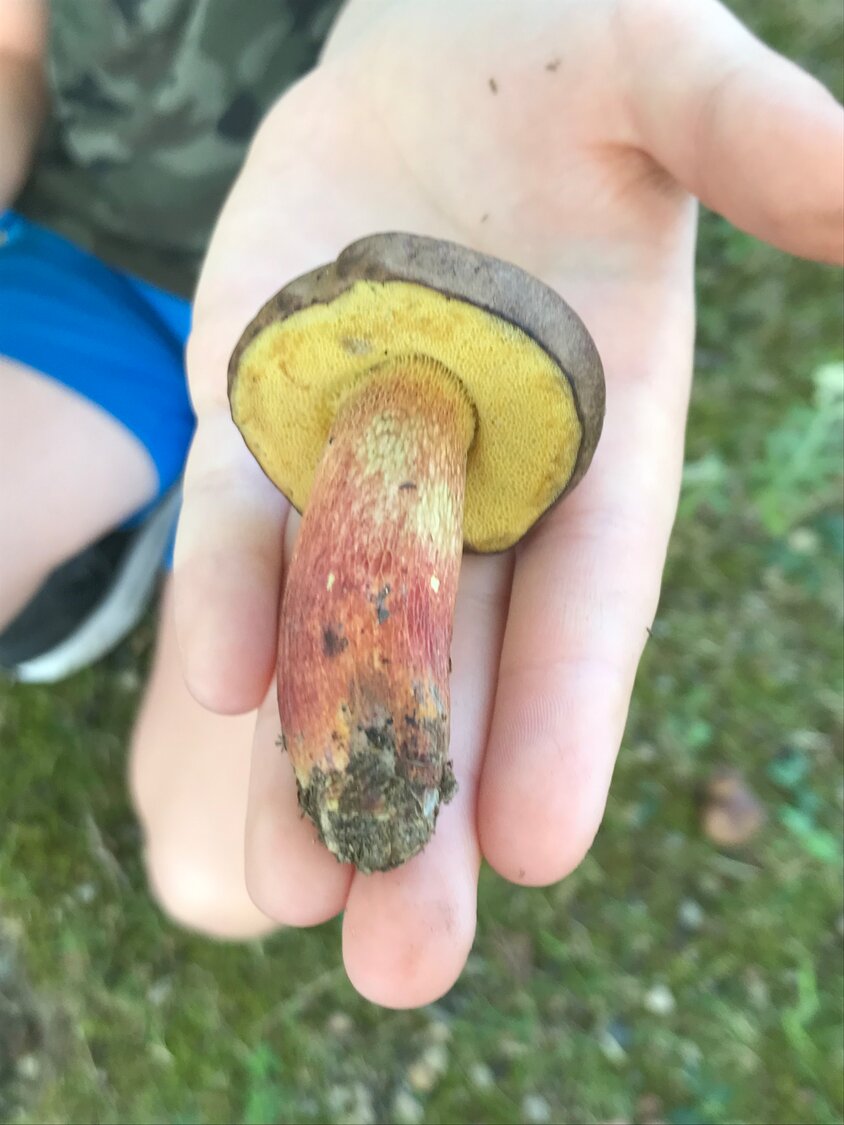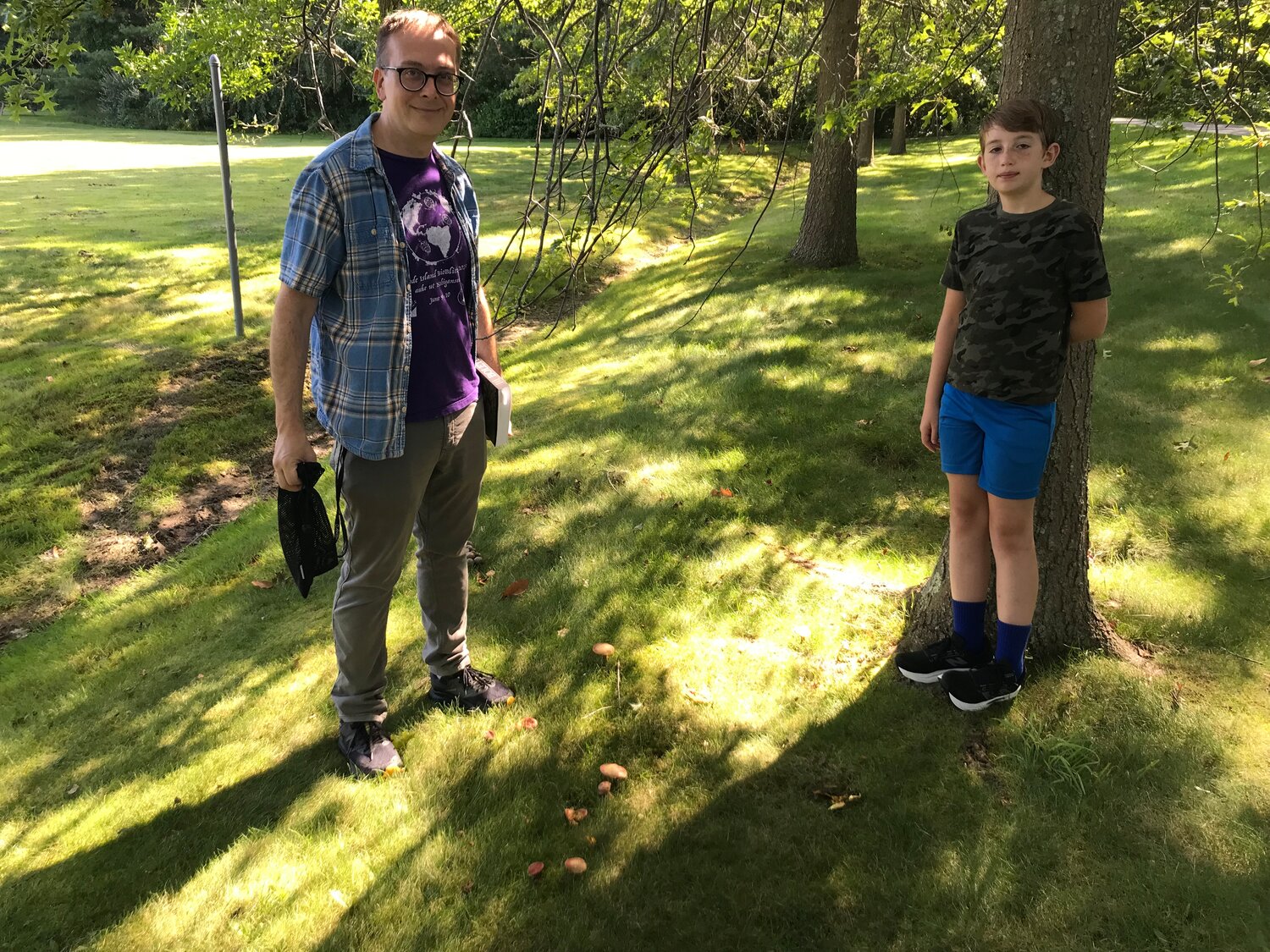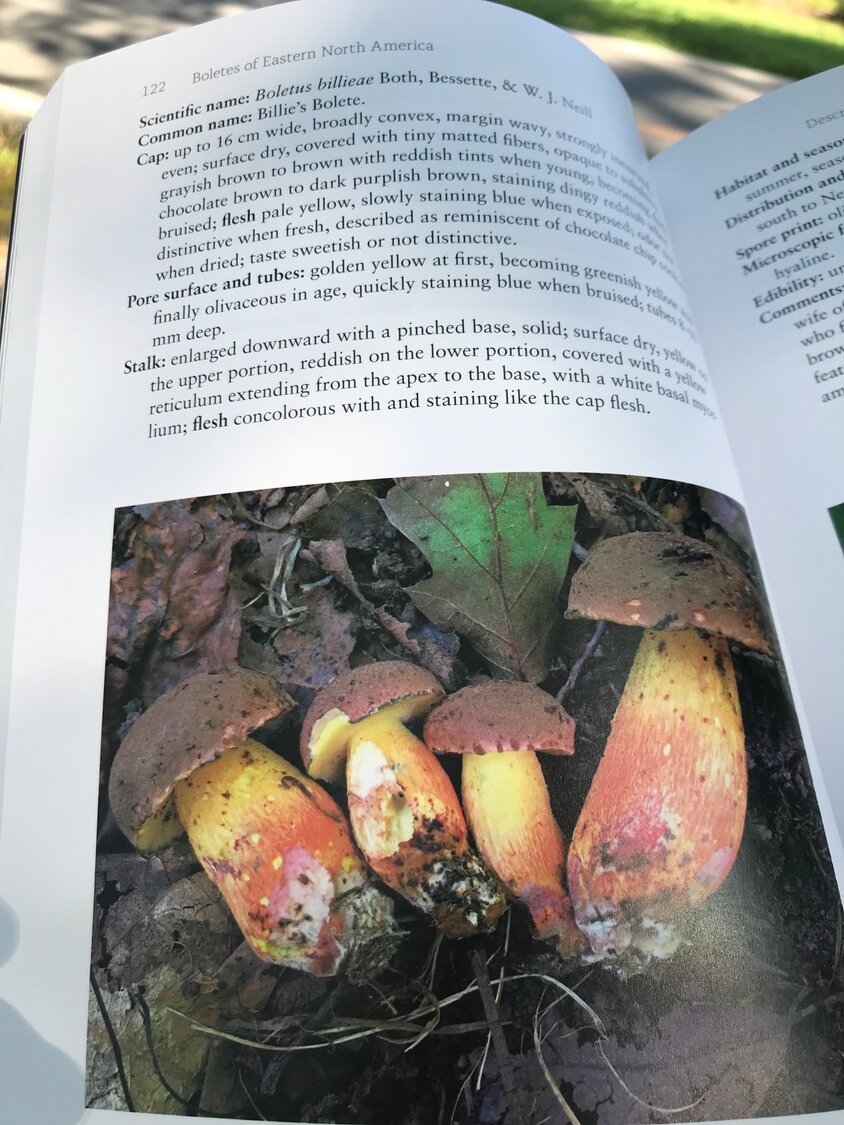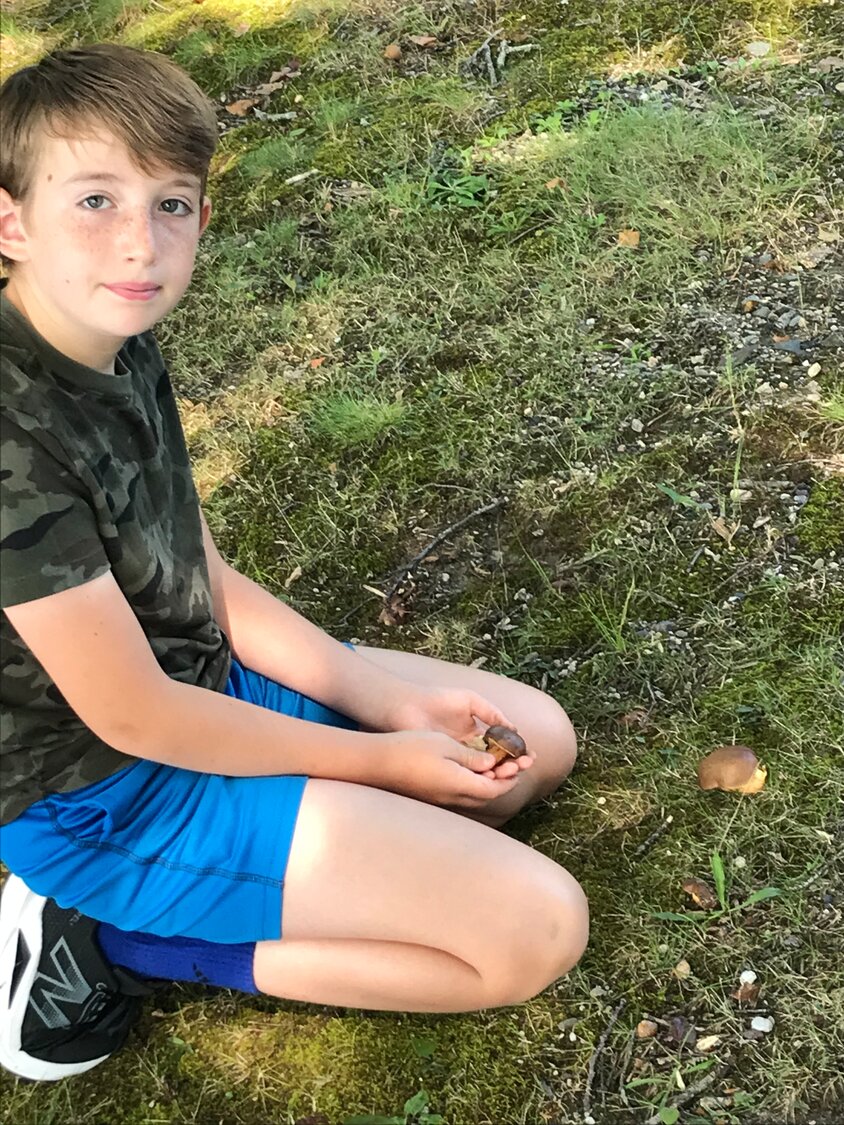Barrington boy discovers rare mushroom for a second time
Silas Claypool finds Billie’s bolete mushrooms a short walk from Brickyard Pond
Silas Claypool walks with his head down, scanning the mix of gravel and patchy grass along the edge of the East Bay Bike Path for Billie’s.
Before too long, he finds one.
…
This item is available in full to subscribers.
Please log in to continue |
Register to post eventsIf you'd like to post an event to our calendar, you can create a free account by clicking here. Note that free accounts do not have access to our subscriber-only content. |
Day pass subscribers
Are you a day pass subscriber who needs to log in? Click here to continue.
Barrington boy discovers rare mushroom for a second time
Silas Claypool finds Billie’s bolete mushrooms a short walk from Brickyard Pond
Silas Claypool walks with his head down, scanning the mix of gravel and patchy grass along the edge of the East Bay Bike Path for Billie’s.
Before too long, he finds one.
“We did find a few billies here and we harvested them,” Silas said. “I was just wondering if any more came up.”
Billie’s are Billie’s bolete mushrooms, or boletus billieae, and are considered an extremely rare fungus. They are seldom seen in the wild — in fact, the discovery of Billie’s this month along the bike path marked just the second time anyone has observed the species in nature this year.
Silas Claypool has found Billie’s twice in the last two years. The 11-year-old Barrington resident gained national (maybe global) attention last year when he found the uncommon mushrooms on a strip of ground between the shoreline of Brickyard Pond and the asphalt edge of the bike path.
Billie’s are believed to grow in sandy soil, often near oak trees.
“They are a mycorrhizal fungus,” said Silas’s dad, Rick Claypool, “which means they will grow in association with trees and only in association with trees.”
Rick has not always been so well-versed in mushrooms, but about five years ago he started studying up after Silas showed an impressive interest in them. It started with a walk in the woods.
“It was just a walk,” Rick said. “It wasn’t even for mushrooms.”
“And then we found so many interesting mushrooms that we got into it,” Silas added. “We wanted to learn more.”
“His mother bought him a field guide and he was just absorbed,” Rick said.
“I memorized it,” Silas added.
Rick said his son had a natural curiosity that grew into a shared hobby between the two.
“He started saying ‘OK, well, this is toxic. This is edible.’ And it’s like, ‘Well, OK, my first-grader is talking about toxic and edible mushrooms. I kinda need to catch up a little bit,’” Rick said. “So I’ve always loved, had and interest in nature, flipping over logs to see the bugs crawling under there. I never really gave mushrooms much of a second glance until he started getting interested. It kind of became something we can do together.”
A year ago, Rick and Silas were out in late August enjoying a mushroom hunt along the edge of Brickyard Pond when they discovered the Billie’s bolete. The mushroom has a brown cap and yellow pores underneath the cap. The stem is yellow and red and has veinlike markings. The pattern on the stem is often called netting. Silas offers another way to identifying Billie’s — he runs a knife blade along the yellowy meat of the mushroom cap and almost instantly it begins to turn blue.
“One thing is you never ever want to rely on one of these identification apps,” Rick said. “You need to connect with people who know what they’re doing.
“There are mushrooms that will make you sick that grow around here. There are mushrooms that will kill you that grow around here.”
Rick and Silas move through the narrow patch of woods near the bike path and locate one species of mushroom after another. They rattle off the names and slide into the stems to see if insects have eaten into the fungi. They show a whitish mushroom with an elongated cap and blurt out its name, which sounds like the marriage of ammonia and margarita. The “amanita” is among the most toxic on the planet.
A few minutes later Rick spots two mushrooms that seem to have fuzzy leopard-print pattern caps. Those, he said, are good to eat.
The Claypool’s knack for finding and identifying mushrooms played a key role in Silas’s success in locating one of the 20 rare, under documented and potentially threatened fungi species in the Northeast Rare Fungi Challenge.
“These are species of mushroom that are known to exist, but they are very rarely seen and documented. So they’ve made it a priority to say ‘Document it and let us know,’” Rick said. “Right now it’s just trying to understand… some are seldom observed, but they might just be subtle. And some of them are truly rare.”
Silas speaks about mushrooms with a level of confidence that likely comes from the countless hours he has spent pouring over his field guide and scouring parks across the state.
“So, bolete mushrooms they generally have a softer texture. They have pores on the underside, which you wouldn’t think of generally,” he said. “When somebody thinks of a mushroom, they think of something that has gills, not pores.”
He points to the stem of Billie’s bolete. “It’s called reticulation, and it looks veiny, like that.”
He picks up a different, similar-looking mushroom. “This one has reticulation, but it’s not Billie’s. This is an edible. It’s in the king bolete group.”
He shows off the Billie’s bolete again: “You can tell it’s Billie’s because you see the brown cap and then the netting. It has to have both the reticulation and that red to yellow color.”
The Billie’s in Silas’s hand is a perfect match to the photograph in the mushroom book Rick is carrying. Rick said he and Silas will preserve one of the Billie’s they picked recently and send it in to be catalogued.
“They confirmed it last year,” he said. “We’re going to send it again.”

